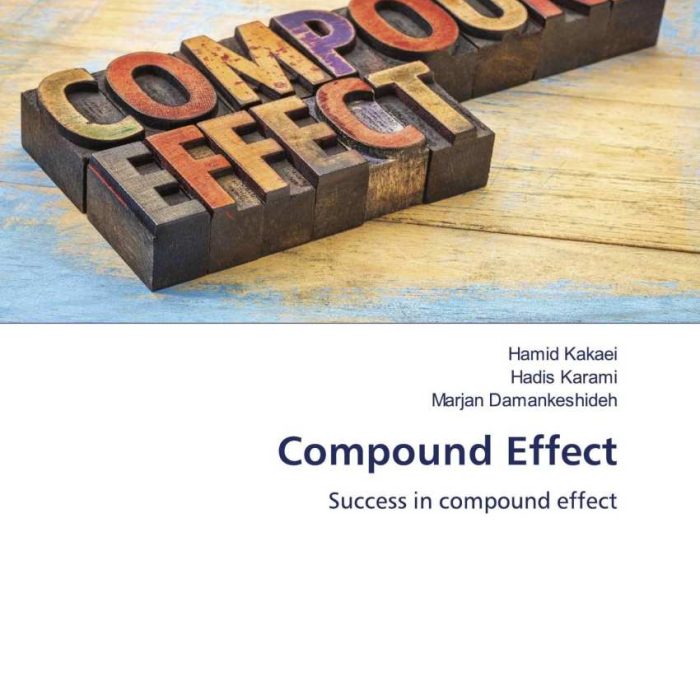کتاب Biofertilizers and soybean growth
۳۸۴,۰۰۰ تومان قیمت اصلی: ۳۸۴,۰۰۰ تومان بود.۱۹۲,۰۰۰ تومانقیمت فعلی: ۱۹۲,۰۰۰ تومان.
| تعداد صفحات | 56 |
|---|---|
| شابک | 978-620-7-46085-4 |
| انتشارات |

کتاب Biofertilizers and Soybean Growth
کتاب “Biofertilizers and Soybean Growth” به بررسی نقش و تأثیرات بیوپسمولاتها (کودهای زیستی) در رشد و بهبود عملکرد سویا میپردازد. این کتاب، پژوهشهای علمی و عملی را در زمینه استفاده از کودهای زیستی بهعنوان یک راهحل پایدار و دوستدار محیطزیست در کشاورزی بررسی کرده و نقش آنها را در تقویت رشد سویا و بهبود کیفیت خاکها تحلیل میکند.
نویسنده در این اثر، اطلاعات جامعی از فرایندهای بیولوژیکی موجود در خاک و تعامل آنها با گیاه سویا ارائه میدهد و اهمیت استفاده از بیوپسمولاتها را در کشاورزی مدرن تشریح میکند. کتاب علاوه بر پژوهشهای علمی، پیشنهادات عملی برای کشاورزان و محققان دارد که چگونه میتوانند از این کودهای زیستی برای افزایش عملکرد سویا بهرهبرداری کنند.
موضوعات کلیدی کتاب
- کودهای زیستی (Biofertilizers): معرفی انواع بیوپسمولاتها و نحوه عملکرد آنها در خاک و گیاه.
- رشد سویا: تحلیل تأثیرات کودهای زیستی بر رشد و عملکرد گیاه سویا از نظر فیزیولوژیکی و زراعی.
- پایدارسازی کشاورزی: بررسی نقش بیوپسمولاتها در کشاورزی پایدار و کاهش اثرات منفی استفاده از کودهای شیمیایی.
- تکنیکهای کاربردی: ارائه روشهای عملی برای استفاده مؤثر از کودهای زیستی در مزارع سویا.
- تحقیقات علمی: مرور آخرین دستاوردها و تحقیقات در زمینه بیوپسمولاتها و تأثیر آنها بر گیاهان زراعی.
ویژگیهای کتاب
- پژوهشهای علمی بهروز: کتاب شامل مجموعهای از مقالات علمی و پژوهشهای جدید در زمینه بیوپسمولاتها و سویا است.
- کاربردهای عملی: اطلاعات کاربردی برای کشاورزان، محققان و دانشجویان کشاورزی در زمینه استفاده از بیوپسمولاتها.
- توجه به محیطزیست: بررسی نقش کودهای زیستی در کاهش اثرات منفی محیطزیستی و بهبود کیفیت خاکها.
- زبان ساده و قابل فهم: کتاب بهگونهای نوشته شده که اطلاعات علمی پیچیده بهطور ساده و روان برای مخاطبان ارائه میشود.
چرا این کتاب را بخوانید؟
این کتاب برای کسانی که در زمینه کشاورزی، علوم خاک و گیاهشناسی فعالیت میکنند، یک منبع ارزشمند است. اگر به دنبال راهحلهای پایدار برای بهبود عملکرد محصولات کشاورزی بهویژه سویا هستید، این کتاب میتواند به شما کمک کند تا روشهای مؤثری برای بهبود خاک و افزایش بهرهوری گیاهان خود بیابید. همچنین برای محققانی که در زمینه کشاورزی پایدار و بیوتکنولوژی فعالیت دارند، این کتاب یک منبع علمی و عملی خواهد بود.
مخاطب هدف
این کتاب برای کشاورزان، محققان و دانشجویان علوم کشاورزی، محیطزیست، بیوتکنولوژی و علوم خاک بسیار مناسب است. همچنین برای کسانی که به استفاده از روشهای پایدار در کشاورزی و کاهش استفاده از کودهای شیمیایی علاقهمند هستند، این کتاب منبعی ارزشمند خواهد بود.
سفارش کتاب
اگر به دنبال منابع علمی و عملی در زمینه کشاورزی پایدار و بیوپسمولاتها هستید، کتاب “Biofertilizers and Soybean Growth” یک انتخاب عالی برای شما خواهد بود. برای خرید کتاب و اطلاعات بیشتر در مورد آن، لطفاً با ما تماس بگیرید.
📘 پرسش و پاسخ درباره کتاب Biofertilizers and Soybean Growth
🔹 فصل 1: معرفی سویا
❓ ۱. سویا چیست و از کجا آمده است؟
🔹 سویا یک گیاه سالانه از خانواده لگوم است که نام علمی آن Glycine max L است. این گیاه از مناطق شمال شرقی چین (استان منچوریا) منشأ گرفته و قدمت آن به بیش از 5000 سال میرسد. سویا یکی از پنج دانه مقدس در تاریخ بشر است که شامل گندم، برنج، جو، ارزن و سویا میباشد.
❓ ۲. سویا در ایران چگونه کشت میشود؟
🔹 کشت سویا در ایران از سال 1931 و 1937 توسط دکتر مهدوی در دانشکده کشاورزی کرج آغاز شد. در سال 1977، میزان تولید سویا در ایران به بیش از 100,000 تن در مساحتی معادل 60,000 هکتار رسید. این گیاه در مناطق مختلفی از ایران، از جمله گنبد، گرگان، بابلسر، ساری، لرستان و آذربایجان شرقی کشت میشود.
🔹 فصل 2: اثرات کودهای زیستی بر رشد سویا
❓ ۳. کودهای زیستی چه تأثیری بر رشد سویا دارند؟
🔹 کودهای زیستی میتوانند به افزایش بهرهوری سویا کمک کنند، زیرا این کودها حاوی میکروارگانیسمهایی هستند که به بهبود کیفیت خاک و افزایش قابلیت دسترسی مواد مغذی برای گیاه کمک میکنند. این فرآیند به رشد بهتر ریشهها و افزایش عملکرد سویا منجر میشود.
❓ ۴. انواع کودهای زیستی مؤثر در کشت سویا کدامند؟
🔹 انواع مختلفی از کودهای زیستی میتوانند برای سویا مفید باشند، از جمله نیتروژنزاها مانند Rhizobium، که برای تثبیت نیتروژن در خاک ضروری است، و همچنین کودهای زیستی که موجب بهبود شرایط خاک و افزایش قابلیت جذب مواد مغذی میشوند.
🔹 فصل 3: چالشها و فرصتها در کشت سویا
❓ ۵. چالشهای کشت سویا در ایران چیست؟
🔹 یکی از چالشهای اصلی کشت سویا در ایران کمبود دانش فنی در مورد مدیریت بهینه کشاورزی، مشکلات آب و خاک، و همچنین کمبود حمایتهای دولتی برای توسعه کشت سویا است. علاوه بر این، تغییرات اقلیمی نیز میتواند بر رشد این گیاه تأثیر بگذارد.
❓ ۶. چگونه میتوان کشت سویا را در ایران توسعه داد؟
🔹 توسعه کشت سویا در ایران نیازمند توجه ویژه به تحقیق و توسعه در زمینه کشاورزی، بهبود تکنیکهای کشاورزی، استفاده از فناوریهای نوین، و تشویق کشاورزان به استفاده از کودهای زیستی و روشهای پایدار است. همچنین، حمایتهای دولتی و ایجاد زیرساختهای مناسب برای بازاریابی و فروش سویا میتواند به افزایش تولید کمک کند.
📌 نکات کلیدی:
- سویا یک گیاه مهم است که دارای تاریخچهای غنی از چین است و در ایران نیز کشت میشود.
- استفاده از کودهای زیستی برای بهبود رشد سویا و افزایش بهرهوری آن بسیار مؤثر است.
- چالشها و فرصتهای زیادی برای توسعه کشت سویا در ایران وجود دارد، که با توجه به آنها میتوان تولید سویا را افزایش داد.
این پرسشها و پاسخها به شما کمک میکند تا مفاهیم کتاب Biofertilizers and Soybean Growth را بهتر درک کنید. 😊
| تعداد صفحات | 56 |
|---|---|
| شابک | 978-620-7-46085-4 |
| انتشارات |
محصولات مشابه
-
کتاب The Grey Stories
۲۱۰,۰۰۰ تومانقیمت اصلی: ۲۱۰,۰۰۰ تومان بود.۱۵۷,۵۰۰ تومانقیمت فعلی: ۱۵۷,۵۰۰ تومان. -
کتاب Compound Effect
۲۱۰,۰۰۰ تومانقیمت اصلی: ۲۱۰,۰۰۰ تومان بود.۱۵۷,۵۰۰ تومانقیمت فعلی: ۱۵۷,۵۰۰ تومان. -
کتاب The Mystic Ladder
۴۹۲,۰۰۰ تومانقیمت اصلی: ۴۹۲,۰۰۰ تومان بود.۲۴۶,۰۰۰ تومانقیمت فعلی: ۲۴۶,۰۰۰ تومان. -
کتاب Advances in Dissimilar Welding of Steel to Copper
۲۱۰,۰۰۰ تومانقیمت اصلی: ۲۱۰,۰۰۰ تومان بود.۱۵۷,۵۰۰ تومانقیمت فعلی: ۱۵۷,۵۰۰ تومان.












